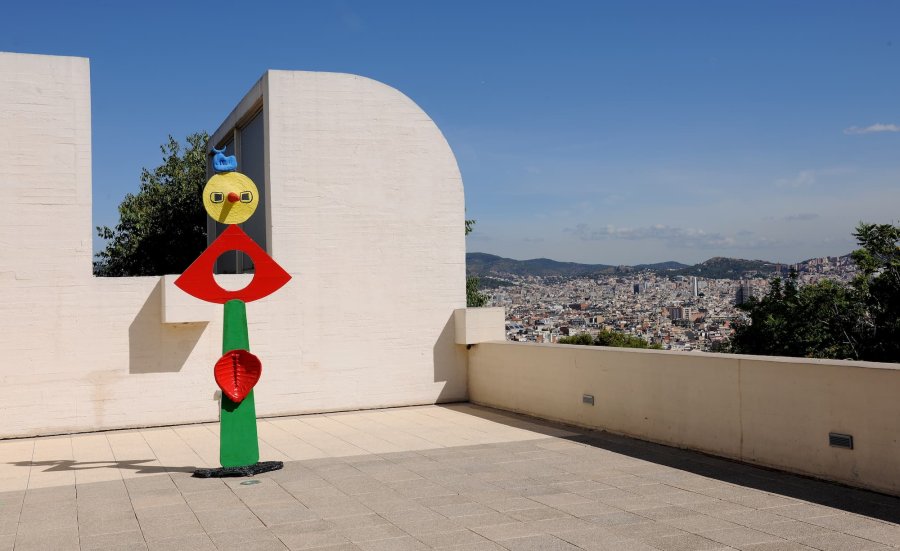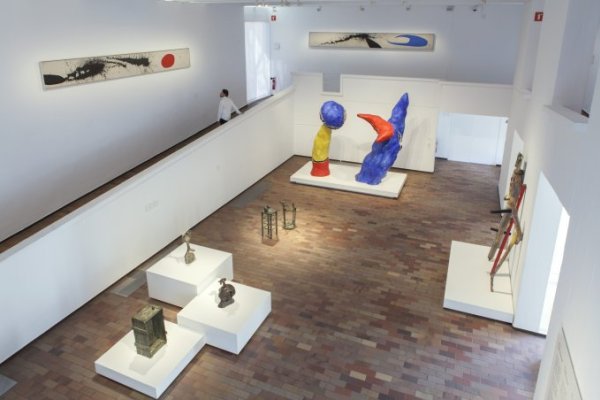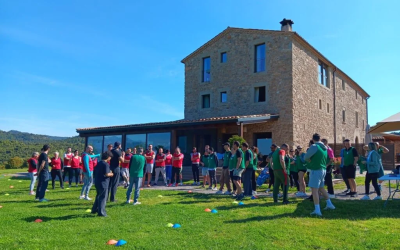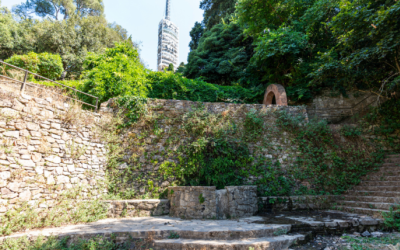Visiting the Joan Miró Foundation means entering the world of one of the most influential artists of the 20th century. From the Montjuïc hill, this space—designed by Miró himself with architect Josep Lluís Sert—becomes a place where art and nature engage in dialogue, inviting visitors to enjoy a museum as unique and inspiring as the artist who created it.
Half a century looking to the future
The Joan Miró Foundation opened its doors on 10 June 1975, the result of Miró’s desire to establish a living space in Barcelona, open to the world and connected to contemporary artists. Now a leading centre where Miró’s work coexists with contemporary artistic creation, the Foundation will celebrate its 50th anniversary in 2025. Under the slogan “For the people of tomorrow”, the commemorative programme includes exhibitions, music and performances throughout the year.
One of the highlights of the celebration is the “Miró and the United States” exhibition, which explores the artist’s relationship with the post-war American avant-garde through works by figures such as Louise Bourgeois, Jackson Pollock, Mark Rothko, and Helen Frankenthaler. Another key moment will be the public opening of the Cypress Garden, a previously closed space that preserves the original trees and benches and revives Sert’s idea of making the museum a place that is open to the outside.
A museum where art and nature intertwine
The Foundation’s building is one of the most notable examples of rationalist architecture, and one of the few museums where a close dialogue is established between the works and the spaces that house them. Sert and Miró chose Montjuïc for its natural richness and their desire to create a space where art would be fully integrated with the surroundings, with vegetation entering the museum and becoming part of it.
From its courtyards and terraces, such as the Olive Courtyard or the Carob Courtyard, visitors can rest, observe and rediscover the museum from another perspective, enjoying views over Montjuïc, the city of Barcelona and Miró’s sculptures, which are part of the landscape.
Walking from Montjuïc Park, one of the city’s great green lungs, as recommended by the Foundation itself, is an ideal way to experience the combination of art and nature, even before you reach the museum.
Miró, an artist rooted in the land
All of this is closely connected to Miró’s art. Nature has always been the origin of his creative process, as well as his attachment to the land and interest in everyday objects, recurring themes in his work. His collection at the Foundation —with more than 200 paintings, 178 sculptures and 8,000 drawings, among other works— covers his entire career and reflects this intimate relationship with the land and culture of Catalonia, and a permanent dialogue with the avant-garde. The permanent collection also includes works by other artists such as Duchamp, Ernst, Tàpies, Chillida and Saura, in a dialogue between generations and perspectives on modernity.
To explore all this in depth, you can download the free Bloomberg Connects app and discover Miró’s works in detail, as well as learn about Sert’s architecture, find out about temporary exhibitions and check the scheduled activities, which include options for all audiences, such as workshops, games and drawing sessions.
With the main objective of making Miró’s work—and modern and contemporary art in general—accessible to everyone, the Foundation is committed to a responsible management model and guarantees physical, auditory, visual and cognitive accessibility.
On its 50th anniversary, the Foundation remains true to Miró’s wish: to be a space for “the people of tomorrow”, an open and inspiring place where art connects with people.








